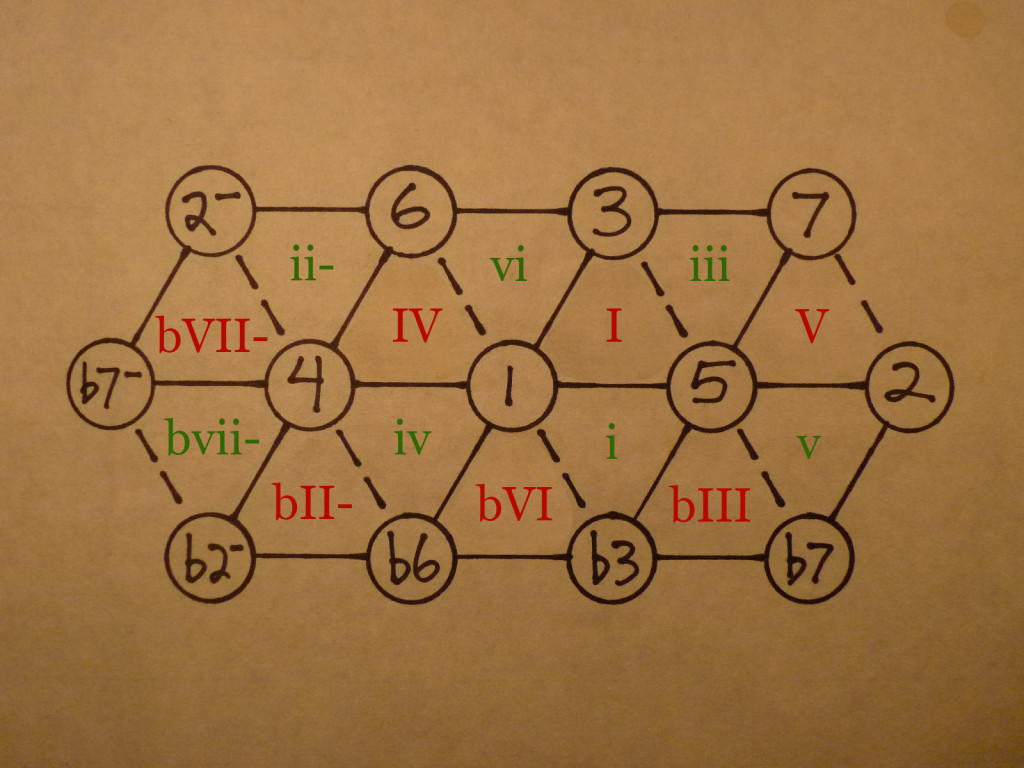Chords on the Lattice
A chord is a collection of three or more notes sounded at the same time. Arpeggios, in which the notes are sounded one after the other, are considered chords too. Two notes sounded at once are generally called an interval rather than a chord.
Chords make patterns on the lattice. A given kind of chord will look the same no matter where it is.
The most common chords are the major and minor triads (a triad is a three-note chord that is a stack of major and/or minor thirds). Here is what a major triad looks and sounds like on the lattice:
The major triad is an upright triangle. It even looks stable. It’s made of three interlocking intervals — in this case, from 1 to 3 (a major third), from 3 to 5 (a minor third), and from 1 to 5 (a perfect fifth).
Anything that looks like this on the lattice is a perfectly-in-tune major chord.
A minor triad is an upside-down triangle. Minor triads look like this:
Major and minor triads interlock to form the hexagonal lattice of fifths and thirds. This generates another lattice, a lattice of chords. W.A. Mathieu goes into great detail in Harmonic Experience, extending the chord lattice a long ways out and showing how music wanders on it. Here is an illustration based on my own lattice:
I use roman numerals for chord names, because the relationships between chords stay the same no matter what key I’m in. For example, the progression C-F-G is exactly the same as the progression G-C-D, at a different pitch. Both are I-IV-V progressions. This convention uses capital letters for major chords, and lower case for minors. I add a little twist by adding + and – to show commas; this allows a unique name for every chord on the infinite lattice.
It’s illuminating to track a chord progression on this lattice. The famous “Heart and Soul” progression, I-vi-IV-V, is what Mathieu calls “Matchstick Harmony.” The lines move like the matches in those matchstick puzzles. Progressions that move by these small harmonic distances are intuitive and easy to follow. The last move, from IV to V, is also easy for the ear, making this chord progression as natural as breathing. Start playing it on the piano and you will instantly have a crowd. In the key of C, it goes C-Am-F-G.
The chord lattice adds another dimension to lattice thinking. Watch the Flying Dream video for a good example. The progression travels far afield, exploring many of these major and minor triangles before finally coming home.
Other chords make other shapes that also repeat all over the lattice. For example, there are at least three different kinds of minor seventh chord. Here’s an article distinguishing them.
